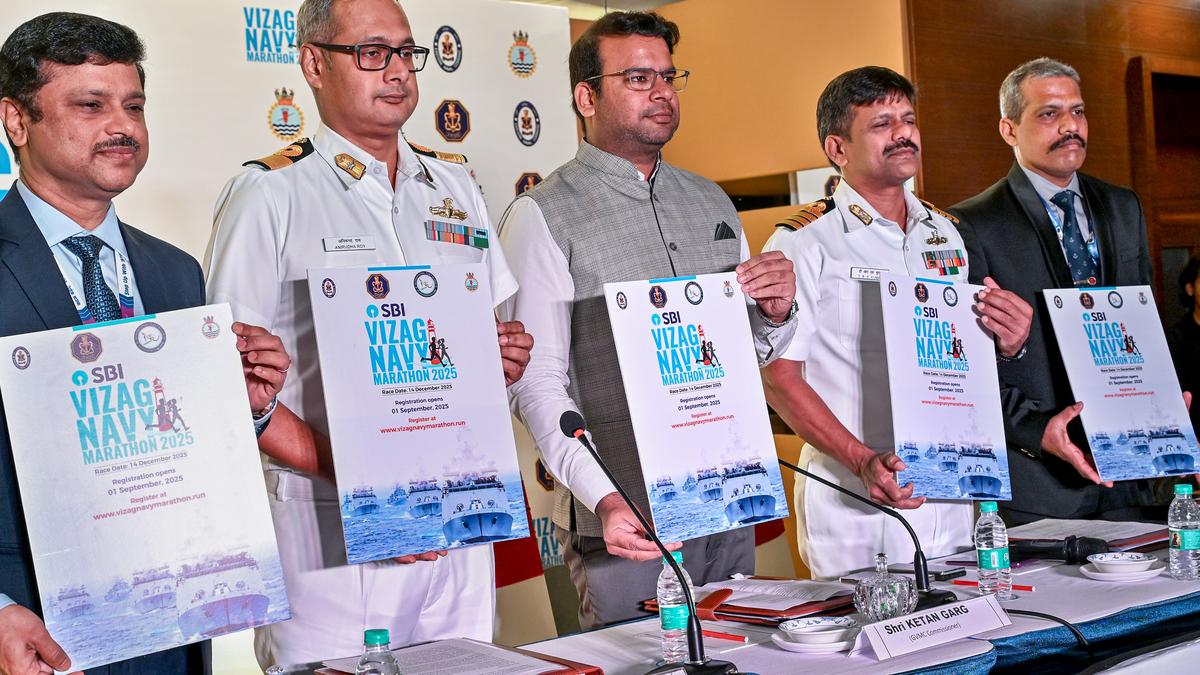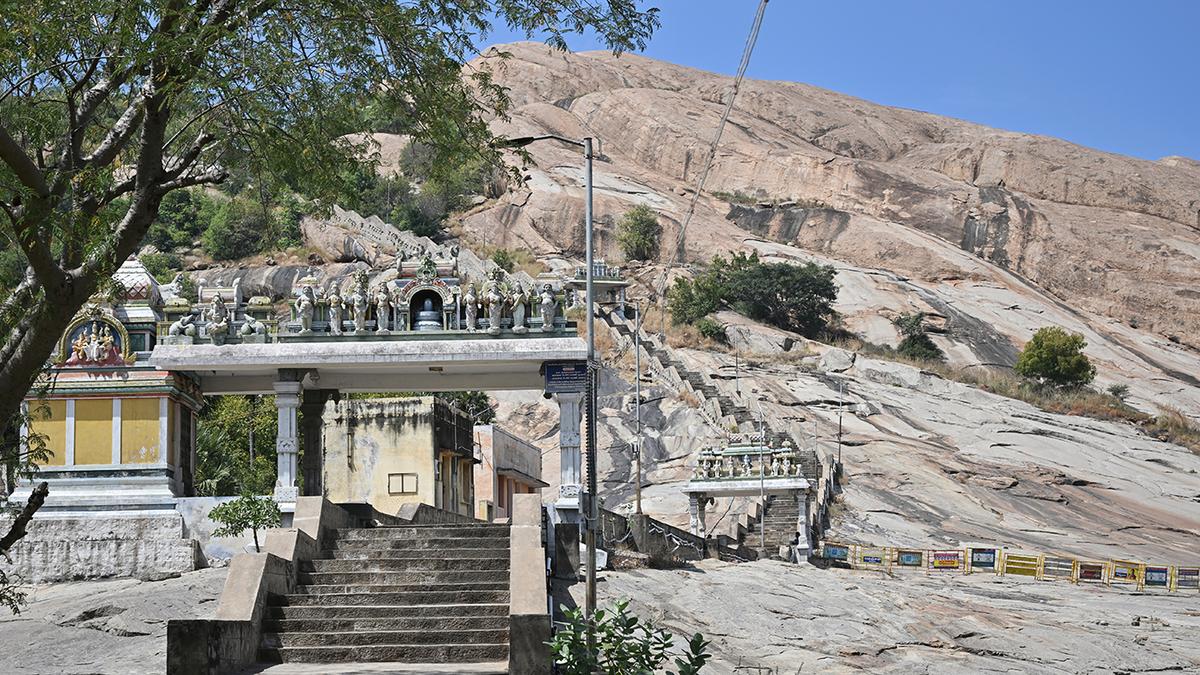On September 15, 2025, Visakhapatnam city underwent a jarring transformation under the Greater Visakhapatnam Municipal Corporation’s (GVMC) massive anti-encroachment initiative “Operation Life to Urban Green Spaces (LUNGS) 2.0.” Once-bustling thoroughfares and commercial streets lay buried beneath jagged steel sheets, shattered wood panels, and the remains of dismantled stalls and shops. The city’s pulse—its vibrant street markets, food courts and trade hubs—had been abruptly silenced, displacing hundreds of people from their livelihoods.
Also read: GVMC clears 1,053 encroachments in Visakhapatnam in two days
The corporation’s claim of reviving the city’s urban spaces was soon met with resistance in the form of protests by displaced street vendors, joined by members of workers’ unions and left parties. By 10 a.m., they assembled near Mahatma Gandhi Statue opposite the GVMC office, the city’s renowned protest site, and soon the air was reverberating with slogans against the corporation and the State government, “accusing them of snatching away livelihoods in the name of urban beautification.”
Among the crowd was K. Geetha, seated with her six-year-old daughter in her lap. Geetha and her husband had been running a tiffin stall in Kancharapalem for eight years, but now their world collapsed overnight, said Geetha with tears in her eyes. “We have a bank loan to repay. Every day we clear ₹1,000 debt, besides school fees, household expenses, and bills. Where will we get the money now? How are we supposed to survive or does the government want us to end our lives,” she questioned.
Also read: GVMC pauses Operation Lungs for Dasara
Triggered by the evictions, many emotionally shattered vendors pleaded with officials for relief, while others hurried to clear their belongings before the earthmovers began their work. The most affected area was reportedly city’s popular night food court at the Old Jail Road. A bustling hub that began with around 30 to 40 food stalls has grown over time to nearly 180 stalls, allegedly mostly unauthorised.
Stating that the GVMC’s eviction drive hit the licenced vendors, Mr. Srikanth, a graduate who ran a licensed food truck here, said, “Instead of dealing with unauthorised vendors, the GVMC has thrown out the 40 licensed ones. Our case is pending in the court, yet they removed us under the pretext of public safety and sanitation. How is this justified?”
Even though the GVMC has not released an official number, the workers’ unions estimate that at least 10,000 families have been directly or indirectly financially hit since the eviction drive commenced.
Vendors salvaging their belongings after the GVMC dismantled carts and small scale shops as part of ‘Operation Lungs 2.0’ at Seethammadhara in Visakhapatnam.
| Photo Credit:
V. Raju
All India Trade Union Congress (AITUC) leader P. Ramana demanded that the GVMC immediately call off the drive. “For the past few days, thousands of poor families have been left devastated over GVMC’s forcibly eviction drive. We are not against development, but against the unethical treatment of these vendors who were not given time to make alternate arrangements. We want footpaths to be free too, but where are the vending zones? Why has the GVMC failed to create alternatives?” he questioned.
A number of women vendors asked if this was the government’s Dasara gift to them. Geetha’s sister-in-law Vasanthi who joined her at the protest site said that she had a sugarcane juice stall at Seethammadhara. In a choking voice, she asked, “Did we ask for “Amma Vodi” or “free bus ride” schemes? The government announced several welfare schemes to help women, but has destroyed our only means of earning. What good are these schemes if our income is taken away?”

Stating that the GVMC did not give any prior notice, Ms. Vasanthi alleged, “No notice was served to us as claimed by the GVMC. They did not give us time to make alternate arrangements or to set shop at a different location. Not even a day’s time was given. They just arrived with bulldozers and I had to pack whatever I could and leave,” while adding, “After years of working as a maid, I saved enough money to set up this juice stall with loans and investments. I have two school-going children, how do I pay their fees or electricity bills, groceries, rent. Is this the government’s festival gift?”
Others echoed her pain, especially the older women, who said they were fighting not just for their livelihood, but for their dignity as well. Padma, 55, stood beneath the blazing sun holding a placard in her call for justice. She shared that her son had passed away twenty years ago, and since then, she has sustained herself by running a tea stall in Kancharapalem. “This was my only source of income and they took it away. I live in a rented house alone, now what will I do,” she cried.
The eviction drive, however, received mixed response from the residents. While some welcomed congestion-free roads and open footpaths, others felt there could have been another solution that did not hit the livelihoods of the poor.

B. Raja Rao, a retired Army officer, said, “The Old Jail Road is finally peaceful. For the first time, I see children cycling near the park and the air is free of any foul smell. Earlier, due to the food waste littering the area, foul smell emanated attracting stray dogs and cattle. It is also good because many vendors sold adulterated and unsafe food.” However, his friend N. Ramesh had a different opinion, “Yes, sanitation was poor, but these food courts provided a rejoicing time to many families in the evenings. Even I often visited these food courts with my family as my children enjoy street food.” Questioning the drive, he asked, “Why could not GVMC regulate them instead of evicting?”
Supporting the drive, members of A.P. Federation for Resident Welfare Associations (APFERWAS), including Uday Shirname and KSR Murthy, said that the move would reduce traffic accidents and improve safety. However, they also insisted that the GVMC must quickly set up proper vending zones for the displaced.
Meanwhile, the human rights activists slammed the evictions as illegal and unconstitutional. V.S. Krishna of HRF pointed out that the Street Vendors (Protection of Livelihood and Regulation of Street Vending) Act, 2014, prohibits such arbitrary actions. Vendors cannot be removed until a proper survey is conducted and certificates of vending are issued. “Evictions without notice or creating alternative zones are unlawful and the GVMC is violating the very law meant to protect these people,” Mr. Krishna said.
‘Political blame-game’
The drive sparked political outrage in the State, with the Opposition accusing the Alliance government of targeting the poor ahead of the Dasara festival.

YSRCP district president K.K. Raju alleged that the drive was a deliberate conspiracy. “The government conducted the drive while MLAs were occupied with Assembly sessions and corporators were away on study tours. However, the responsibility is now being passed between the Mayor and the GVMC Commissioner,” he said.
The move was reportedly criticised by ruling party corporators and MLAs, who expressed their displeasure with the party high command. Visakhapatnam South MLA Vamsikrishna Srinivas strictly condemned the move and promised to push for relief measures.
A street vendor salvages his cart and other belongings after the GVMC’s anti-encroachment drive at Seethammadhara in Visakhapatnam.
| Photo Credit:
V. Raju
General Secretary of Jana Sena Party (JSP) Bolisetty Satyanarayana highlighted the provisions of the Street Vendors Act that protect vendors from eviction and allow them access to schemes like PM SVANidhi loans and insurance. He demanded regulated models such as fixed operating hours, strict hygiene standards, waste disposal rules, and transparent licensing through tenders.
Allegeding massive irregularities in stall collections, he said, “Nearly ₹25lakh was being collected every month from 240 stalls on Jail Road, and about ₹50 lakh from 1,750 stalls elsewhere. The government must recover this money and clean up the system.”
Essential for public health, says GVMC
GVMC Commissioner Ketan Garg said that “Operation Lungs 2.0” was essential for public health, pedestrian safety, and smooth traffic flow. “Encroachments have forced pedestrians onto busy roads, creating bottlenecks and increasing accidents. Many stalls sell unhygienic food that poses health hazards. “Operation Lungs 2.0” is about protecting people by clearing footpaths, reducing congestion, and making the city safer and more aesthetic.”
Rehabilitation
The GVMC assured that steps are being taken to rehabilitate eligible vendors. Project Director of Urban Community Development (UCD) wing of GVMC, M. Satyaveni said, “We are identifying eligible vendors and creating vending opportunities. The corporation has already submitted 21 vending zones options to the government, but as these would not be sufficient, more are being identified. Surveys of vendors are 90% complete and those recognised under the State Street Vendors Act will receive alternative arrangements.”
The Project Director appealed to the vendors and public not to believe rumours or misconceptions about the operation. She told The Hindu, “Following the GVMC Commissioner’s orders, the Town Planning and UCD officials have been in the process of setting things in place for the vending zones. Probably, it may take just a few weeks time.”
Meanwhile, according to GVMC officials, the city witnessed a significant increase in the number of street vendors over the past five years, particularly after the COVID-19 pandemic. A senior GVMC official said that during the pandemic, many small-scale shops emerged to meet the demand for daily essentials such as groceries, fruits, and vegetables. This trend gradually contributed to the rise in street vending.
Today, the city sees hundreds of street food stalls, tiffin centres and other kiosks, many of which operate along roads and footpaths. GVMC officials estimate that there are currently around 18,000 street vendors officially recognised within its jurisdiction.


